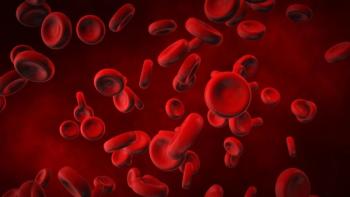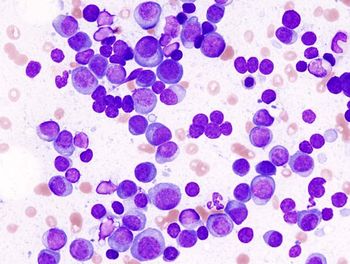
WHO Survey Determines Increased Cancer Burden Over Next 25 Years
A 77% increase in the risk of developing cancer by 2050 was determined by the World Health Organization in a recent survey.
The International Agency for Research on Cancer (IARC), part of the World Health Organization (WHO), recently published updated estimates on the global cancer burden, which is impacting underserved populations and creating cancer inequities.1
In 2022, 20 million patients were diagnosed with cancer, and there were 9.7 million deaths, according to WHO. A total of 53.5 million patients were alive 5 years following a cancer diagnosis. Additionally, 1 in 5 people will develop cancer, including 1 in 9 men and 1 in 12 women dying from cancer.
WHO surveyed universal health coverage and found that 39% of participating countries offered the basics of cancer management. This included financing health services for all citizens in a health benefits package. Additionally, only 28% of participating countries took on the cost of palliative care for those who required it.
"When we think about the major risk factors: tobacco use, alcohol, and obesity—that's worldwide. Especially in Western countries, ultra-processed foods, processed meats—those are the...risk factors that are contributing to higher cancer rates—colorectal cancer, especially,” Andrew Ilbawi, MD, who is focal point of the Cancer Program at WHO in Geneva, Switzerland, in an interview with CBS News.2
There there were 10 types of cancer that collectively comprise new cases and deaths in 2022, according to the IARC. These data encompass 185 countries at 36 different cancer centers.
Lung cancer was the most common malignancy worldwide, accounting for 2.5 million new cases (12.4%). The second most common malignancy was female breast cancer with 2.3 million cases (11.6%), followed by colorectal cancer with 1.9 million new cases (9.6%), prostate cancer with 1.5 million (7.3%), and stomach cancer with 970,000 (4.9%).
Lung cancer–related deaths occurred in 1.8 million patients (18.7%), colorectal cancer led to 900,000 deaths (9.3%), liver cancer with 760,000 (7.8%), breast cancer with 670,000 (6.9%), and stomach cancer with 660,000 (6.8%). Results of the study found that lung cancer as the leading type of cancer was most likely due to an uptick in tobacco use in Asia.
"One of the main issues is tobacco use. In Asian countries, there’s a high rate of tobacco use, which is contributing of course to mortality," Tim Tiutan, MD, a hospitalist from Memorial Sloan Kettering Cancer Center, said in the CBS News article.
Of note, the incidence of mortality was found to differ between sexes, where women were more likely to die from breast cancer compared with lung cancer for men. In 157 of 185 countries, the most common cancer in women was breast cancer. The most common cancer in 25 countries, with a majority in sub-Saharan Africa, was cervical cancer at 661,044 new cases and 348,186 deaths.
However, the WHO noted this could be eradicated through a recognition of varying incidence levels.
WHO found that countries with a human development index (HDI) had 1 in 12 women being diagnosed with breast cancer and 1 in 71 dying from it. Countries with a low HDI had 1 in 27 women diagnosed with breast cancer and 1 in 48 died from it.
Global inequities and cancer services were also observed with the human benefit package. For lung cancer, a package, including radiation services was 4 to 7 times more likely to be included for a higher-income country. The survey found the widest disparity occurred in stem cell transplantation, which was 12 times more likely to be included in a higher-income country as well.
"What we’re finding is that people who live in less developed countries are not only dying more from cancer, but they’re also getting less adequate access to symptom management," Tiutan said.
By 2050, are 35 million cancer diagnoses expected, which is a 77% increase from 20 million in 2022. The increase in cancer burden is occurring from increased risk factors such as socioeconomic development, tobacco and alcohol use, and obesity.
For countries with high HDI, there is an estimated greatest risk increase with an additional 4.8 million cases. For low HDI countries, there will be a 142% increase, and for median HDI countries by 99%.
References
- World Health Organization. Global cancer burden growing, amidst mounting need for services. February 1, 2024. Accessed February 2, 2024. https://shorturl.at/pLNU7
- CBS News. New cancer cases to increase 77% by 2050, WHO estimates. February 1 2024. Accessed February 2, 2024. https://shorturl.at/rABQ0
Newsletter
Stay up to date on recent advances in the multidisciplinary approach to cancer.

















































































